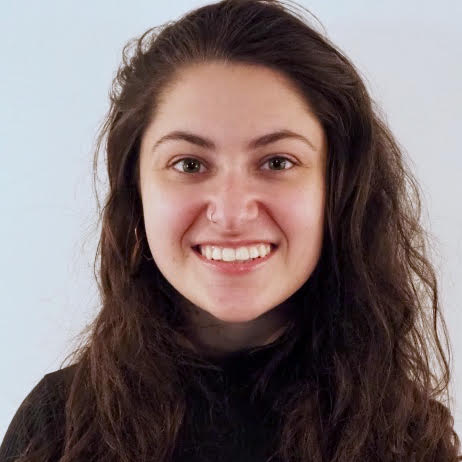
Jordan Gusdorff
Ph.D. Student, Materials Science & Engineering
200 S. 33rd St
201 Moore Building
Philadelphia, PA 19104
Email: jag18@seas.upenn.edu
Phone: (215) 898-8312
Fax: (215) 573-2068
Jordan received a B.S. in physics from Lafayette College in 2020. Her undergraduate research focused on investigating the optical and electronic properties of thin-film ferroelectric materials. Her current research interests include low-dimensional materials and their applications in optoelectronics and quantum information processing. Jordan was awarded an NSF Graduate Research Fellowship in 2020.
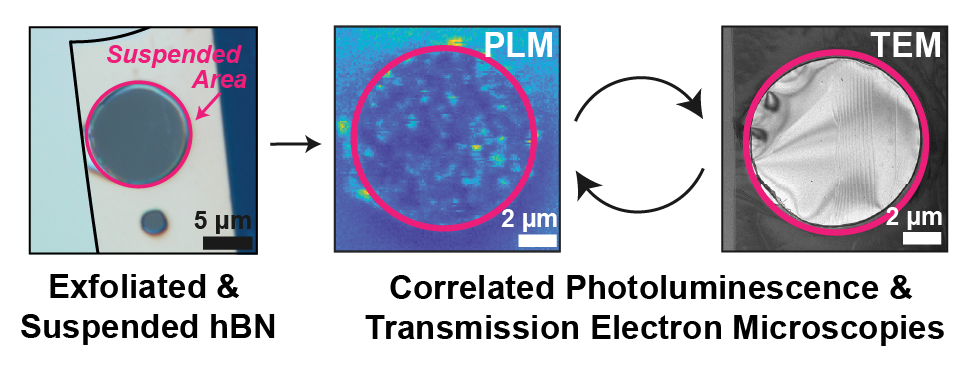
Gusdorff, Jordan A.; Bhatia, Pia; Shin, Trey T.; Uy-Tioco, Alexandra Sofia; Sailors, Benjamin N.; Keneipp, Rachael N.; Drndić, Marija; Bassett, Lee C.
Correlated Structural and Optical Characterization of Hexagonal Boron Nitride Journal Article
In: ACS Nano, vol. 9, iss. 11, pp. 11100-11110, 2025.
@article{Gusdorff2025,
title = {Correlated Structural and Optical Characterization of Hexagonal Boron Nitride},
author = {Jordan A. Gusdorff and Pia Bhatia and Trey T. Shin and Alexandra Sofia Uy-Tioco and Benjamin N. Sailors and Rachael N. Keneipp and Marija Drndić and Lee C. Bassett},
url = {https://pubs.acs.org/doi/10.1021/acsnano.4c17676
https://arxiv.org/abs/2411.14408},
doi = {10.1021/acsnano.4c17676},
year = {2025},
date = {2025-02-21},
urldate = {2025-02-21},
journal = {ACS Nano},
volume = {9},
issue = {11},
pages = {11100-11110},
abstract = {Hexagonal boron nitride (hBN) hosts quantum emitters that exhibit single-photon emission and spin-dependent fluorescence at room temperature. These features make hBN a promising platform for quantum sensing and photonics. Despite many investigations of their optical properties, the emitters' chemical structure remains unclear, as does the role of contamination at surfaces and interfaces in forming the emitters or modifying their properties. We prepare hBN samples that are compatible with both confocal photoluminescence microscopy (PL) and transmission electron microscopy (TEM), and we use those techniques to investigate correlations between fluorescent emission, flake morphology, and surface residue. We find that the microscopy techniques themselves induce changes in hBN's optical activity and residue morphology: PL measurements induce photobleaching, whereas TEM measurements alter surface residue and emission characteristics. We also study the effects of common treatments — annealing and oxygen plasma cleaning — on the structure and optical activity of hBN. The results illustrate the power and importance of correlative studies to elucidate aspects of microscopic mechanisms that influence hBN's functionality as a host for quantum emitters and spin defects.},
keywords = {},
pubstate = {published},
tppubtype = {article}
}
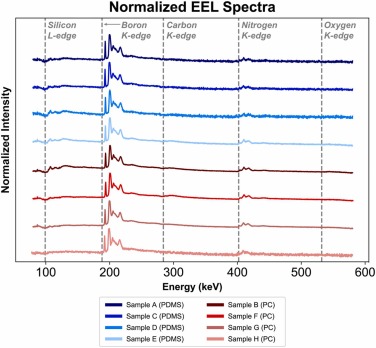
Bhatia, Pia; Shin, Trey T.; Kavetsky, Kyril; Sailors, Benjamin N.; Siokos, George; Uy-Tioco, Alexandra Sofia; Keneipp, Rachael N.; Gusdorff, Jordan A.; Bassett, Lee C.; Drndić, Marija
In: Micron, vol. 189, pp. 103747, 2024.
@article{Bhatia2024,
title = {A tale of two transfers: characterizing polydimethylsiloxane viscoelastic stamping and heated poly bis-A carbonate transfer of hexagonal boron nitride},
author = {Pia Bhatia and Trey T. Shin and Kyril Kavetsky and Benjamin N. Sailors and George Siokos and Alexandra Sofia Uy-Tioco and Rachael N. Keneipp and Jordan A. Gusdorff and Lee C. Bassett and Marija Drndić},
url = {https://www.sciencedirect.com/science/article/pii/S0968432824001641#sec0080},
doi = {10.1016/j.micron.2024.103747},
year = {2024},
date = {2024-11-26},
urldate = {2024-11-26},
journal = {Micron},
volume = {189},
pages = {103747},
abstract = {Two-dimensional (2D) materials have many applications ranging from heterostructure electronics to nanofluidics and quantum technology. In order to effectively utilize 2D materials towards these ends, they must be transferred and integrated into complex device geometries. In this report, we investigate two conventional methods for the transfer of 2D materials: viscoelastic stamping with polydimethylsiloxane (PDMS) and a heated transfer with poly bis-A carbonate (PC). We use both methods to transfer mechanically-exfoliated flakes of hexagonal boron nitride onto silicon nitride (SiNx) substrates and characterize the resulting transfers using atomic force microscopy (AFM), aberration-corrected scanning transmission electron microscopy (AC-STEM) and electron energy loss spectroscopy (EELS). We find that both transfer methods yield flakes with significant and comparable residue (within the limitations of our study on eight samples). Qualitative interpretation of EELS maps demonstrates that this residue is comprised of silicon, carbon and oxygen for both transfer methods. Quantitative analysis of AC-STEM images reveals that the area covered in residue is on average, slightly lower for PDMS transfers (31 % ± 1 %), compared to PC transfers (41 % ± 4 %). This work underscores the importance of improving existing transfer protocols towards applications where cleaner materials are critical, as well as the need for robust methods to clean 2D materials.},
keywords = {},
pubstate = {published},
tppubtype = {article}
}
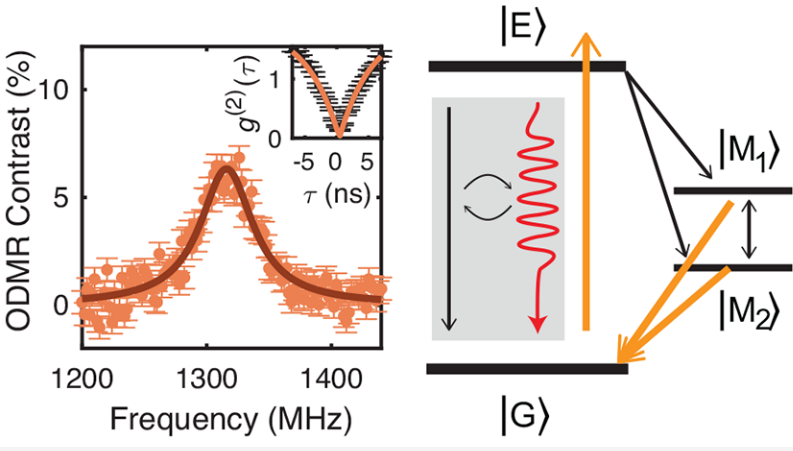
Patel, Raj N.; Fishman, Rebecca E. K.; Huang, Tzu-Yung; Gusdorff, Jordan A.; Fehr, David A.; Hopper, David A.; Breitweiser, S. Alex; Porat, Benjamin; Flatté, Michael E.; Bassett, Lee C.
Room Temperature Dynamics of an Optically Addressable Single Spin in Hexagonal Boron Nitride Journal Article
In: Nano Letters, vol. 24, iss. 25, pp. 7623-7628, 2024.
@article{Patel2024,
title = {Room Temperature Dynamics of an Optically Addressable Single Spin in Hexagonal Boron Nitride},
author = {Raj N. Patel and Rebecca E. K. Fishman and Tzu-Yung Huang and Jordan A. Gusdorff and David A. Fehr and David A. Hopper and S. Alex Breitweiser and Benjamin Porat and Michael E. Flatté and Lee C. Bassett},
url = {https://pubs.acs.org/doi/abs/10.1021/acs.nanolett.4c01333
https://arxiv.org/abs/2309.05604},
doi = {10.1021/acs.nanolett.4c01333},
year = {2024},
date = {2024-06-11},
urldate = {2024-06-11},
journal = {Nano Letters},
volume = {24},
issue = {25},
pages = {7623-7628},
abstract = {Hexagonal boron nitride (h-BN) hosts pure single-photon emitters that have shown evidence of optically detected electronic spin dynamics. However, the electrical and chemical structures of these optically addressable spins are unknown, and the nature of their spin-optical interactions remains mysterious. Here, we use time-domain optical and microwave experiments to characterize a single emitter in h-BN exhibiting room temperature optically detected magnetic resonance. Using dynamical simulations, we constrain and quantify transition rates in the model, and we design optical control protocols that optimize the signal-to-noise ratio for spin readout. This constitutes a necessary step toward quantum control of spin states in h-BN.},
keywords = {},
pubstate = {published},
tppubtype = {article}
}

Keneipp, Rachael N.; Gusdorff, Jordan A.; Bhatia, Pia; Shin, Trey T.; Bassett, Lee C.; Drndić, Marija
Nanoscale Sculpting of Hexagonal Boron Nitride with an Electron Beam Journal Article
In: Journal of Physical Chemistry C, vol. 128, no. 21, pp. 8741–8749, 2024.
@article{Keneipp2024,
title = {Nanoscale Sculpting of Hexagonal Boron Nitride with an Electron Beam},
author = {Rachael N. Keneipp and Jordan A. Gusdorff and Pia Bhatia and Trey T. Shin and Lee C. Bassett and Marija Drndić},
url = {https://pubs.acs.org/doi/full/10.1021/acs.jpcc.4c02038},
doi = {10.1021/acs.jpcc.4c02038},
year = {2024},
date = {2024-05-17},
journal = {Journal of Physical Chemistry C},
volume = {128},
number = {21},
pages = {8741–8749},
abstract = {Creating sub- to few-nanometer defects and nanopores in hexagonal boron nitride (hBN) opens opportunities for engineering quantum emitters and for nanofluidic and sensing applications. Using the electron beam in the aberration-corrected scanning transmission electron microscope, we demonstrate modification, thinning, and drilling of features in few-layer hBN membranes (∼5 to 20 nm-thick). The atomic composition is monitored with electron energy loss spectroscopy, which also facilitates drift correction. We report effects of electron beam energy and exposure times on defect size and structure. While previous studies focused on beam energies of ≤80 keV to avoid material damage, we show that drilling is favorable at a higher beam energy of 200 keV. The drilling rate at 200 keV is about 10 times larger than at 80 keV (∼1.2 vs 0.1 nm/min), and smaller pores are achievable with minimized damage to the surrounding material. Thinned hBN nanoscale features demonstrate enhanced emission via photoluminescence spectroscopy.},
keywords = {},
pubstate = {published},
tppubtype = {article}
}
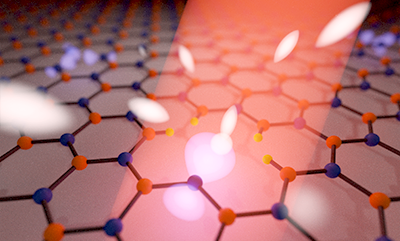
Patel, Raj N.; Hopper, David A.; Gusdorff, Jordan A.; Turiansky, Mark E.; Huang, Tzu-Yung; Fishman, Rebecca E. K.; Porat, Benjamin; de Walle, Chris G. Van; Bassett, Lee C.
Probing the Optical Dynamics of Quantum Emitters in Hexagonal Boron Nitride Journal Article
In: PRX Quantum, vol. 3, no. 3, pp. 030331, 2022.
@article{Patel2022,
title = {Probing the Optical Dynamics of Quantum Emitters in Hexagonal Boron Nitride},
author = {Raj N. Patel and David A. Hopper and Jordan A. Gusdorff and Mark E. Turiansky and Tzu-Yung Huang and Rebecca E. K. Fishman and Benjamin Porat and Chris G. Van de Walle and Lee C. Bassett},
url = {https://journals.aps.org/prxquantum/abstract/10.1103/PRXQuantum.3.030331},
doi = {10.1103/PRXQuantum.3.030331},
year = {2022},
date = {2022-09-01},
journal = {PRX Quantum},
volume = {3},
number = {3},
pages = {030331},
abstract = {Hexagonal boron nitride is a van der Waals material that hosts visible-wavelength quantum emitters at room temperature. However, experimental identification of the quantum emitters’ electronic structure is lacking, and key details of their charge and spin properties remain unknown. Here, we probe the optical dynamics of quantum emitters in hexagonal boron nitride using photon emission correlation spectroscopy. Several quantum emitters exhibit ideal single-photon emission with noise-limited photon antibunching, g(2)(0)=0. The photoluminescence emission lineshapes are consistent with individual vibronic transitions. However, polarization-resolved excitation and emission suggests the role of multiple optical transitions, and photon emission correlation spectroscopy reveals complicated optical dynamics associated with excitation and relaxation through multiple electronic excited states. We compare the experimental results to quantitative optical dynamics simulations, develop electronic structure models that are consistent with the observations, and discuss the results in the context of ab initio theoretical calculations.},
keywords = {},
pubstate = {published},
tppubtype = {article}
}
